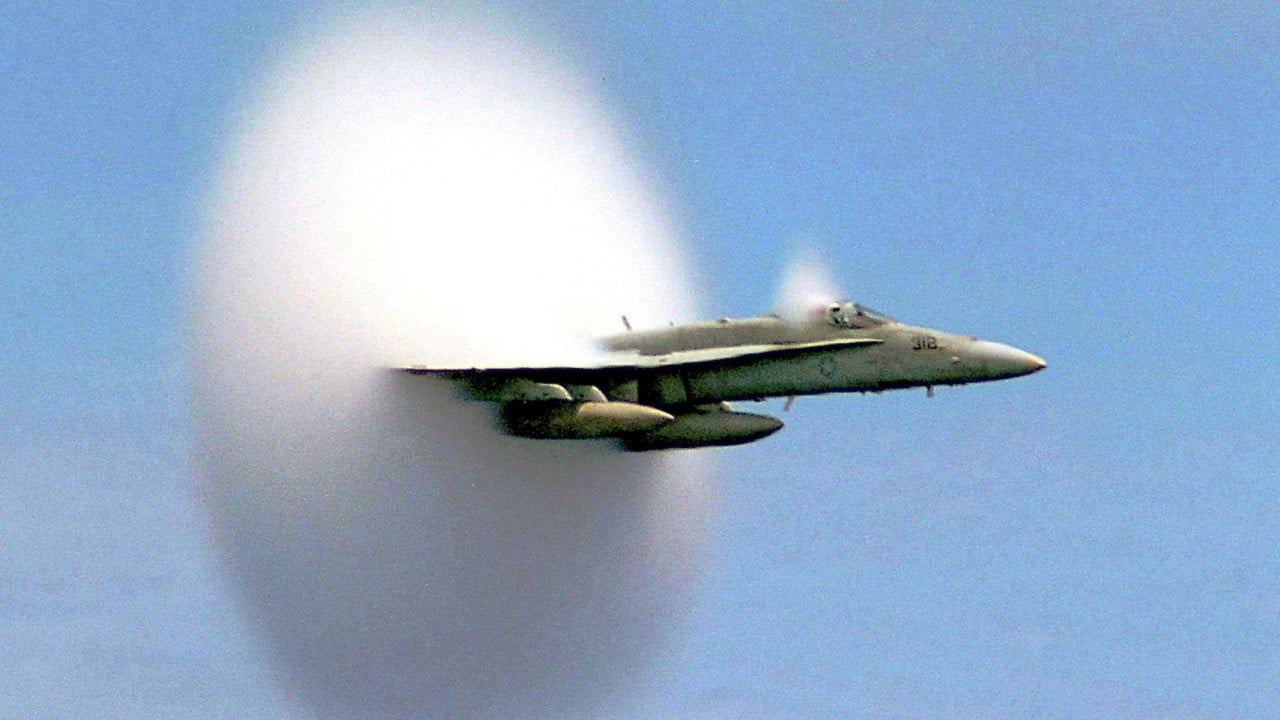Scientists in northwest China wanted to find a way to reduce the shock waves and sonic booms created when an aircraft flies at supersonic speeds – so they drilled holes into a plane wing.
It was an unorthodox approach, but the holes facilitated airflow from beneath the wing to its upper surface. And that effectively mitigated the shock wave vibrations that cause sonic booms, according to the team from Northwestern Polytechnical University, who used wind tunnel data and computer simulations to carry out the study.
The holes also improved aerodynamic efficiency by a margin of more than 10 per cent, they said in a report published last month in the peer-reviewed Chinese aviation journal Acta Aerodynamica Sinica.
The team’s discovery challenges a fundamental principle of aircraft design that goes back to the Wright brothers’ first flight in 1903.
Separation of air by the wing is seen as the reason behind a plane’s ability to fly. The design of the wing – with a curved upper surface and a flat underside – induces airflow above to accelerate, creating lower pressure, while airflow below the wing moves slower, generating higher pressure.

That difference in pressure creates lift, and when other conditions remain the same, the faster the plane, the greater the lift. Every plane in the air today owes its design to this idea, known as Bernoulli’s principle.
But as the plane approaches the speed of sound, it encounters a formidable barrier. Shock waves create turbulence at the wing’s trailing edge, and this can introduce drag, diminish lift and unleash destructive vibrations.
Only specially hardened planes can overcome the sound barrier, but that is an expensive and difficult process and only a few countries are making supersonic fighter jets at present.
The US military’s latest F-35 stealth fighter, for example, cannot sustain supersonic cruise because it could cause structural damage.
The sonic booms created by shock waves can sound like an explosion and they can even shatter windows. The Concorde was banned from flying over land because of its thunderous sonic booms, and that was part of the reason it was retired in 2003.
Adding holes to the plane’s wing could resolve these problems, according to Gao Chao, a professor with Northwestern Polytechnical University’s School of Aeronautics who led the research in Xian, Shaanxi province.
For their study, the team added a cover over the holes that only opened when the plane surpassed the speed of sound.
As the airflow beneath the wing converged with the airflow above, it stopped shock waves from forming behind the wing, according to the paper.
It said an air pump in the holes was used to modulate the intensity of the jet stream, halting the progression of turbulence towards the wing’s front and nearly eliminating wing vibrations.
“When using jet stream control to suppress shock wave buffeting, although there is a slight loss of lift, it can reduce overall drag, so the lift-to-drag ratio increases rather than decreases,” Gao and his colleagues wrote.

Other research teams – mainly from China and the United States – have looked at adding grooves or protrusions to the wing surface to regulate turbulence, installing a mechanical device at the rear of the wing to suppress shock waves, or adding a piezoelectric film coating on the wings to manipulate airflow.
Nasa is expected to conduct the first test flight of its new X-59 supersonic jet sometime this year. The experimental plane, built in partnership with Lockheed Martin, aims to reduce the noise of supersonic flight. Its nose is as protracted as its body and the cockpit does not have a forward-facing windscreen.
Gao’s team believes their solution is the simplest, and in the paper said they would conduct more wind tunnel tests to “bring the application of this technology to life”.


